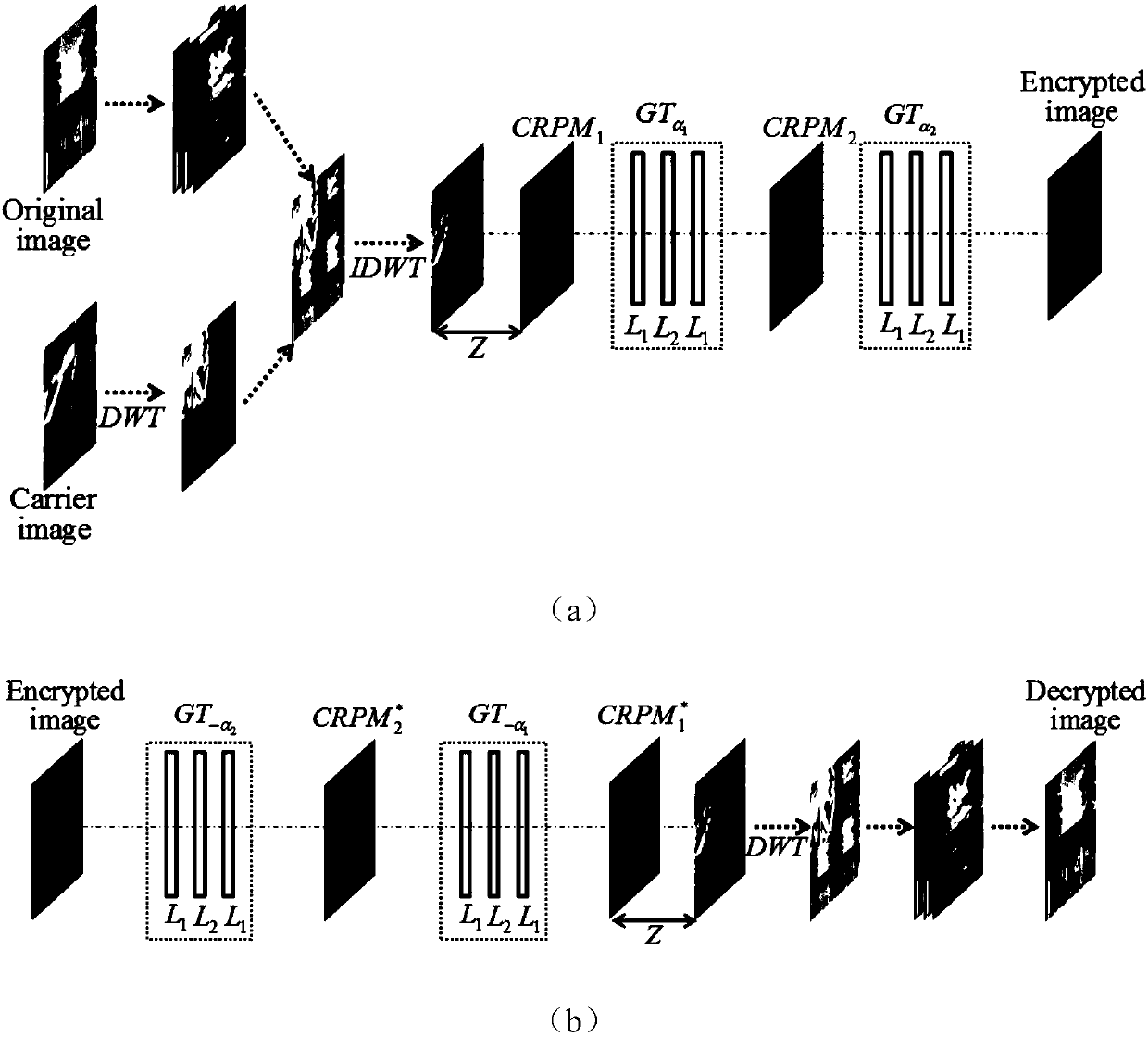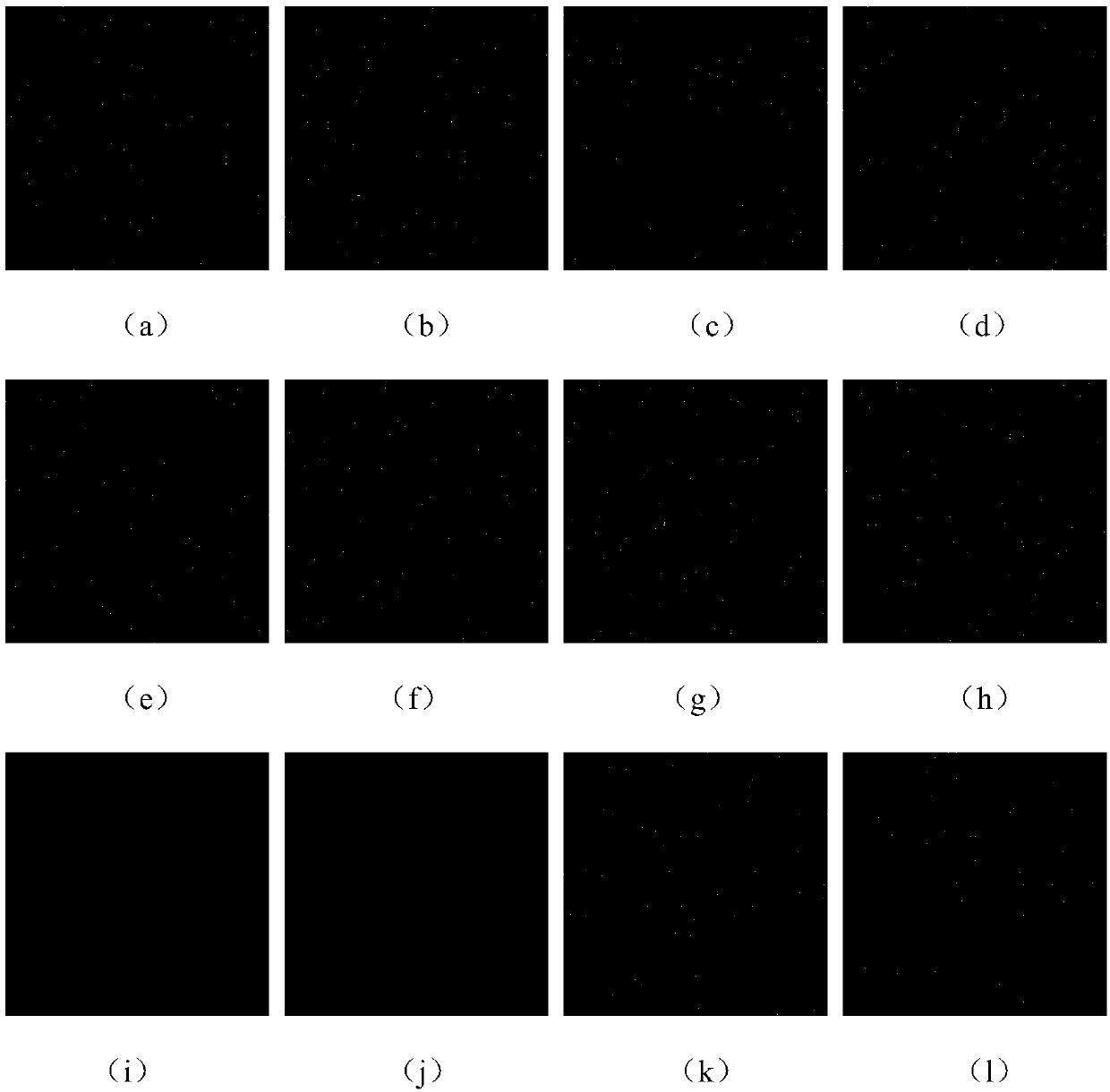Single channel color image encryption method based on discrete wavelet transform and chaotic double random phase encoding
A technology of discrete wavelet transform and chaotic random phase, which is applied in the field of information security and optical information processing, can solve the problems of reducing the system key space, not being able to make keys, phase plate key management and transmission inconvenience, and achieve management and transmission Convenience, resistance to cryptographic attacks, and the effect of ensuring security
- Summary
- Abstract
- Description
- Claims
- Application Information
AI Technical Summary
Problems solved by technology
Method used
Image
Examples
Embodiment 1
[0069] A single-channel color image encryption method based on discrete wavelet transform and chaotic double-random phase encoding, the schematic diagram of its encryption and decryption principle is as follows figure 1 shown. The method consists of an encrypted part of the image and a decrypted part.
[0070] (1) The encrypted part of the image:
[0071] In the encryption process, the color image to be encrypted is firstly decomposed into three color channels of R, G, and B; then, a gray-scale carrier image is decomposed into four frequency bands by using discrete wavelet transform, and three of the high-frequency The frequency bands are replaced by the three color channels of the color image; next, Fresnel transform is performed on the carrier image containing the color image information, the transformed image is modulated by the first chaotic random phase plate, and then the modulated image is subjected to the second One Gyrator transformation; finally, the Gyrator transf...
Embodiment 2
[0076] Combine below figure 1 The design principle introduces the scheme in embodiment 1 in detail, see the following description for details:
[0077] A single-channel color image encryption method based on discrete wavelet transform and chaotic double-random phase encoding, the schematic diagram of its encryption and decryption principle is as follows figure 1 shown. The method consists of an encrypted part of the image and a decrypted part. The specific implementation manners of these two parts will be described in detail below.
[0078] (1) The encrypted part of the image:
[0079] 1) First decompose the color image f to be encrypted into three RGB color channels f R , f G and f B ; Then use the discrete wavelet transform to transform the carrier image f Z Broken down into four frequency bands:
[0080] [LL 1 ,LH 1 ,HL 1 ,HH 1 ]=DWT(f Z ) (1)
[0081] In the formula, LL 1 ,LH 1 ,HL 1 ,HH 1 Respectively, the low-low, low-high, high-low, high-high frequency...
Embodiment 3
[0102] Below in conjunction with specific accompanying drawing, the scheme in embodiment 1 and 2 is carried out feasibility verification, see the following description for details:
[0103] Adopt the image encryption method provided by the implementation of the present invention to convert a color image (such as figure 2 Shown in (a)) Embedding a carrier image (such as figure 2 As shown in (b), the carrier image is encrypted into a noise-like image (such as figure 2 (c) shown). Depend on figure 2 (c) It can be seen that both the information of the color image and the carrier image are hidden in the noise-like image, which shows that the encryption of the color image by this system is successful.
[0104] The image encryption method provided by the implementation of the present invention is used to restore the original color image from the encrypted image. When all keys are correct, the result obtained is as follows: figure 2 (d) shown. Depend on figure 2 (d) It can...
PUM
 Login to View More
Login to View More Abstract
Description
Claims
Application Information
 Login to View More
Login to View More - Generate Ideas
- Intellectual Property
- Life Sciences
- Materials
- Tech Scout
- Unparalleled Data Quality
- Higher Quality Content
- 60% Fewer Hallucinations
Browse by: Latest US Patents, China's latest patents, Technical Efficacy Thesaurus, Application Domain, Technology Topic, Popular Technical Reports.
© 2025 PatSnap. All rights reserved.Legal|Privacy policy|Modern Slavery Act Transparency Statement|Sitemap|About US| Contact US: help@patsnap.com



